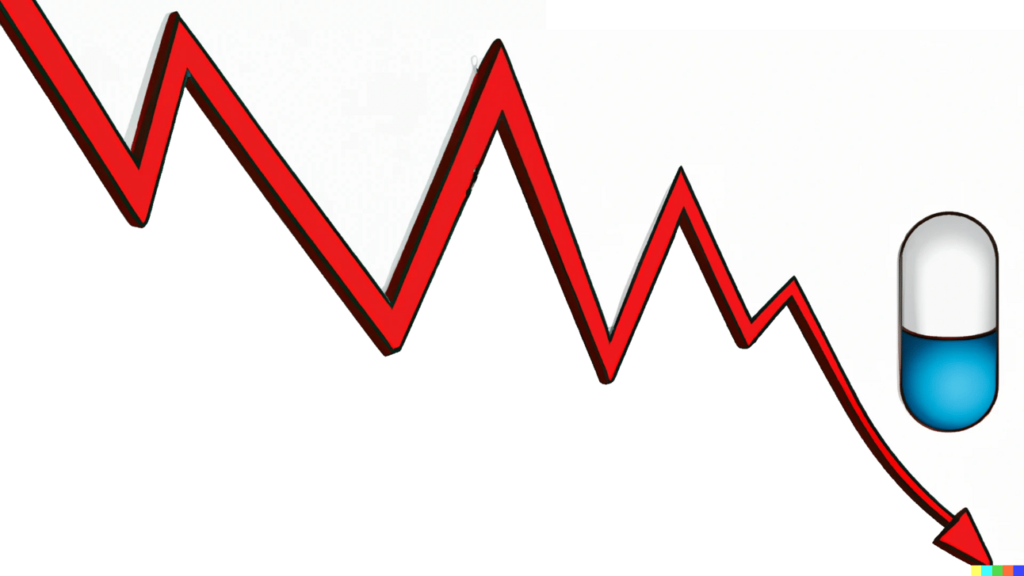I have a quick rant below about the state of coverage of drug price increases, but I don’t want that to distract you from the drug-price story you should be reading: Adam Fein/Drug Channel’s just-published analysis of SSR Health’s data on net prices. In 2023, net prices fell 3% (7.4% if you want to adjust for inflation). The reasons for the drop are key to understanding the industry, and it’s these numbers that should be generating the headlines. Instead …
… so lots and lots of outlets covered Jan. 1 price hikes yesterday.
Almost all of them sourced their stories to original reporting from Reuters, which — in turn — got the data from 46Brooklyn**, which gets its drug-price data from Elsevier.
This means that, like a photocopy of a photocopy, the usefulness of the stories is getting worse and worse the further they get from the original data. The first Reuters story didn’t have any meaningful details on which drugs were increasing in price or how large those increases were.
So that means that all the follow-on stories — from Fierce, from BioSpace, from Business Insider, from Axios, among others — also lacked the kind of background that would make the stories remotely insightful.
The pieces also lack any caveats about the data itself. For instance, Pfizer always figures prominently in these stories, because Pfizer makes its Jan. 1 price increases available, via subscription databases used by the drug supply chain, well ahead of New Year’s Day.
So Pfizer is overindexed in the coverage, not because the company is any more aggressive about raising prices but because the technical way that they tell wholesalers and others about price changes means that their actions get noticed.
With context like that removed, the reporting is designed to imply that pharma companies are doing something egregious. What specific behavior is egregious? Who knows?
** None of this should be taken as a knock against Antonio and his team at 46Brooklyn. Antonio knows full well what is and is not important, and he’s trying like h*ck to make that clear. It’s kind of unfortunate (for Antonio, especially) that 46Brooklyn seems to be the only place reporters can think of to find that data.
I’m going to forego the 2024 predictions this year. I’ve learned that you all are a sophisticated audience, and it’s unlikely that I can peer around corners better than my readership.
Instead, I’m going to focus many of the Arcs this month around an issue that needs more analysis and fewer predictions: launch prices.
In 2024, the launch price of a medicine may be the single largest commercial decision that’s ever made about a product, and it may be the single biggest communication priority, too.
Once upon a time, an under-priced therapy could be adjusted, through price increases, to a price that reflected its value. But both reputational and regulatory obstacles make sure strategies more difficult today. The price at launch is likely to be the price that sticks, by and large.
There’s also a suggestion that launch prices will get more scrutiny. The Congressional Budget Office predicts that companies will seek higher prices at approval in an effort to counteract the end-of-lifecycle revenue cliff from the IRA. And though there are compelling reasons why this logic is faulty — if companies could seek greater premiums on medicines, the argument goes, they would already be doing so — that doesn’t mean it’s not the conventional wisdom.
Launch brands will certainly get scrutiny from payers, which have become quite adept at discouraging use of new drugs. Utilization management is going to be the weapon of choice in knocking down medicines that aren’t priced the value. A drugmaker that can’t defend its launch price will quickly find itself among the 40% of medicines that miss their first-year forecasts.
And the Institute for Clinical and Economic Review — among others — had advocated for klieg lights on the price of new therapies. “Patients today, and those in the future, need the country to address the ever-rising launch prices of new drugs, and to begin doing it now,” wrote (now former) ICER Steve Pearson about a year ago. It was a call to arms, not only for insurance companies, but for academics, too.
All of this means that it’s going to be hugely important to track and understand the trends about launch prices.
That’s why — next month — I’ll be releasing the first-ever Reid Strategic Launch Price Communications Report. The “LPC” will look not only at how companies priced their medicines, but how they disclosed the price, and what the ensuing media coverage looked like.
I’ll be talking a lot about the LPC over the next few weeks, and I’ll make information about discounted pre-orders and an overview webinar available later in January.
If you’d like more information about communicating around value and pricing ahead of launch, please drop me a line.
Speaking of versions of stories you’ve already seen, USA Today and Axios covered the Flovant saga, and USA Today did a piece on falling insulin prices.
The Wall Street Journal has a consumer-y story on how individuals can drive down their medicine bills, referencing IRA changes, biosimilars, discount cards, and the like.
If this email was forwarded to you, and you’d like to become a reader, click here to see back issues of Cost Curve and subscribe to the newsletter.





